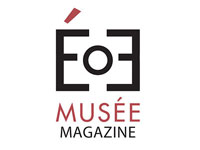
By Paul Longo
Across the Ravaged Land, Nick Brandt’s consummation to his trilogy documenting the disappearing animals of eastern Africa, now showing at Hasted Kraeutler, is a study of balance, of intimacy and enormity, of crippling isolation and the comfort of community. In short (and perhaps put in a cliché manner), this exhibit is merely a representation of life. However, it is a boiled down version of what every living creature must walk through, an existence stripped of complexity and captured in all its uplifting and terrifying reality.
The installation was laid out in a series of three rooms, each piece labeled with a number so as to direct the viewer’s experience with the exhibit as a whole; yet, I chose to take in the photographs in “reverse” order, starting with the last of the three rooms. It is fascinating the difference arrangement makes with Across the Ravaged Land. Either direction allows you to appreciate the lushness of Brandt’s work, but the order in which you view them greatly influences the exhibit’s overall tone. The collection’s first image (shown above) denotes an arduous, solitary journey across a bleak, never-ending landscape. Conversely, the last image of three huddled lionesses all gazing in opposite directions, illustrates community, togetherness in the middle of a harsh environment. These bookends make obvious the importance of viewing order and its impact on the spectator’s understanding of the exhibition. Very cleverly done.
What really intrigued me though, were pieces such as the one above. In cases like this, I applaud Brandt’s decision to photograph at an astonishingly close proximity. This, coupled with the lack of color breeds intimacy, infusing a jarring humanity into the exhibit. The only way I can think to capture the relationship between this elephant and her child in words, is to say that Brandt presents us with a “hermetically sealed intimacy”: touching moments of tenderness in the middle of acrid and seemingly infinite landscapes. But as is required of Brandt for his portrayal of these instances, he must, and does display the darker side of this African setting.
A few of Brandt’s photographs document Lake Natron, a lake in northern Tanzania that petrifies almost all living organisms who come in contact with its highly salty water. Calcified Fish Eagle, Lake Natron evinces Brandt’s attempt to represent the cyclicality of life: this eagle, whose body gives off a sandy, dirt-encrusted look, is subject to the harshness of its surroundings. A once proud predator freely roaming the open skies is reduced to dust, returned to the ground. Across the Ravaged Land is surprisingly satisfying in this way, making the ubiquitous fact of mortality seem new and fresh again.
From a lion framed just right by the setting sun, to that same predator letting his voice be heard amidst the enormity of his habitat, Brandt manages to weave in themes of introspection and declaration, while espousing the notion that empathy must not only be a human-to-human interaction, but a human-to-animal one, as well.